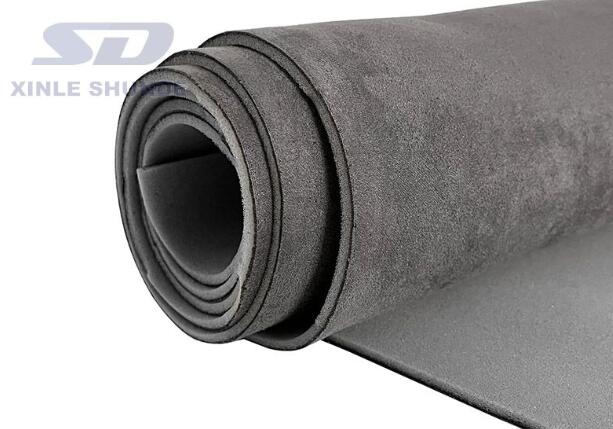The automotive headliner fabric plays an essential role in a vehicle's interior, both aesthetically and functionally. A well-chosen headliner fabric not only enhances the visual appeal but also contributes to insulation, noise reduction, and overall comfort. However, selecting the right material can be challenging due to the variety of options available. This guide will walk you through the factors to consider when choosing the right automotive headliner fabric for your vehicle.

Automotive headliner fabrics come in various types, each with unique characteristics. The most common materials include foam-backed cloth, synthetic suede, and vinyl.
Foam-backed cloth: This is a popular choice due to its affordability and ease of installation. It provides a soft texture and is available in a wide range of colours. However, it may not be as durable as other materials, especially in high-humidity environments.
Synthetic suede: Known for its luxurious feel, synthetic suede offers a high-end look for vehicle interiors. It's durable and visually appealing but comes at a higher price point than foam-backed cloth.
Vinyl: A durable, easy-to-clean material, vinyl is resistant to stains and moisture, making it an excellent choice for vehicles frequently exposed to wear and tear. Vinyl is often used in heavy-duty or off-road vehicles.
Each of these materials has unique benefits and drawbacks, so your choice will depend on factors like budget, aesthetics, and expected use.
When choosing a headliner fabric, it's essential to consider its durability and maintenance requirements. Some materials are more resistant to wear, fading, and stains, which can prolong the lifespan of the headliner.
High-durability fabrics: For those who frequently use their vehicles, especially in harsh conditions, opting for high-durability fabrics like vinyl or heavy-duty cloth can be beneficial.
Easy maintenance: Synthetic suede, while luxurious, may require more maintenance, as it can be susceptible to stains. Foam-backed cloth is relatively easy to clean but might need replacement sooner due to its lightweight nature.
Evaluate how often you're willing to maintain the fabric and whether the material aligns with your usage patterns. A durable fabric choice will provide long-lasting appeal and functionality.
Climate and environmental factors play a significant role in determining the right headliner fabric. Certain fabrics hold up better in specific conditions.
High-humidity environments: In regions with high humidity, foam-backed cloth may deteriorate faster, as moisture can weaken the foam layer over time. Vinyl, being moisture-resistant, may be a better choice in these climates.
Extreme heat and sunlight: Synthetic suede or UV-resistant vinyl is suitable for areas with high sun exposure, as they are less likely to fade or deteriorate under sunlight.
Understanding your vehicle's exposure to environmental factors can help in selecting a fabric that will stay in optimal condition for a longer period.
The headliner fabric also plays a critical role in defining the interior aesthetics of your vehicle. Colours, textures, and finishes all impact the overall look and feel.
Colour selection: Many suppliers offer fabrics in a wide range of colours to match or complement your vehicle's interior. Lighter shades can create a more open feel, while darker colours add sophistication and are better at concealing stains.
Texture and finish: If a premium, refined look is your goal, synthetic suede provides a soft, luxurious finish. For a more rugged, utilitarian look, consider vinyl, which is more resistant to damage and stains.
Ensure that the fabric you choose aligns with your personal preferences and complements the style of your vehicle's interior.
Budget is a key consideration when selecting a headliner fabric. Some materials, like synthetic suede, come with a higher price tag due to their luxurious appearance and durability. Foam-backed cloth is more budget-friendly, but it may not last as long or perform as well in harsh conditions.
Additionally, installation costs should be factored in. While foam-backed cloth is generally easier and cheaper to install, more intricate materials like synthetic suede may require professional installation, adding to the overall cost. Be sure to weigh both the upfront and long-term costs associated with each fabric type.
Choosing the right automotive headliner fabric requires careful consideration of factors like durability, maintenance, climate suitability, aesthetics, and budget. Each fabric type offers distinct advantages, and selecting the right one can significantly enhance both the appearance and functionality of your vehicle's interior. It's advisable to consult with a knowledgeable supplier who can guide you through these options and offer insights based on your specific needs.
For assistance in selecting and purchasing the perfect headliner fabric, feel free to contact us for personalized advice. As a trusted supplier in automotive headliner fabrics, we're committed to helping you find the ideal match for your vehicle.